This pub comprises the Sawyer’s Arms and the adjacent betting shop, part of what was the New Theatre’s foyer. It also includes the area at the rear, occupied by the now-demolished auditorium. The New Theatre opened in 1914, with the musical Wait and See, but was soon showing films. It became a bingo hall in the early 1960s and closed in the 1990s. A distinctive stone façade extends across the front of the Sawyer’s Arms and the theatre. The public house is a long-time feature of Commercial Street and ‘a building of local importance’.
A photograph of the miners’ rescue team.
This photograph shows the miners’ rescue team, with their masks off, probably taken at Maesteg in c1920.
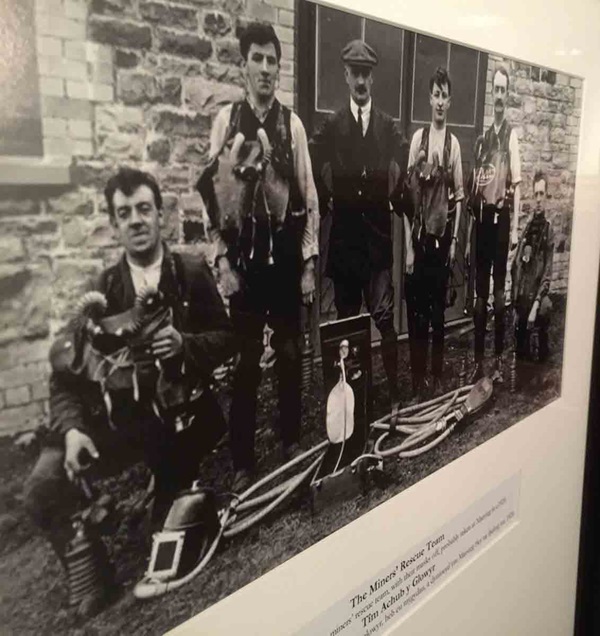
A photograph and text about David ‘Dai’ Watts.
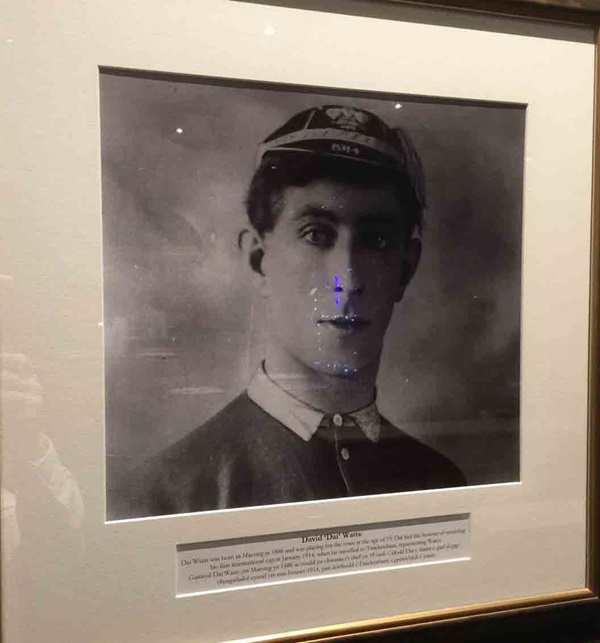
The text reads: Dai Watts was born in Maesteg in 1886 and was playing for the town at the age of 19. Dai had the honour of receiving his first international cap in January 1914, when he travelled to Twickenham, representing Wales.
A photograph entitled The Drop Kick.
This photograph inspired the mural artist David Crossley to produce a painting in the rear beer garden.
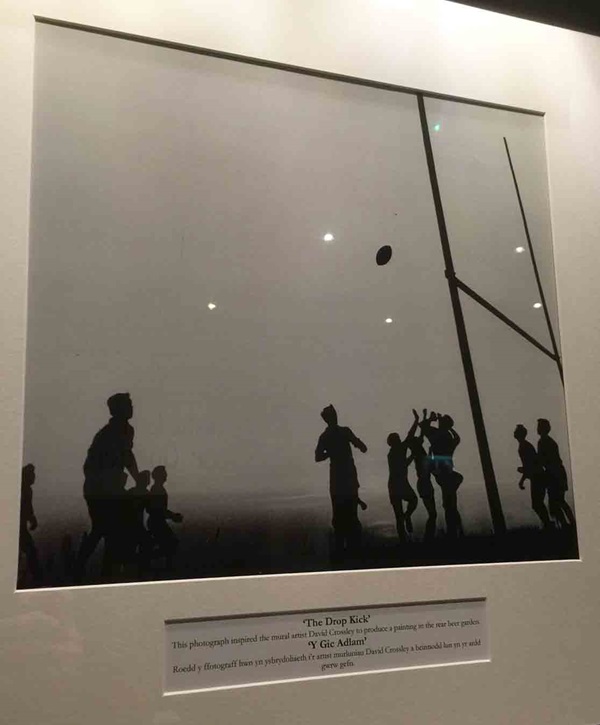
A photograph of Commercial Street, showing the awnings of tailor and outfitter Henry Laviers & Co, c1924.
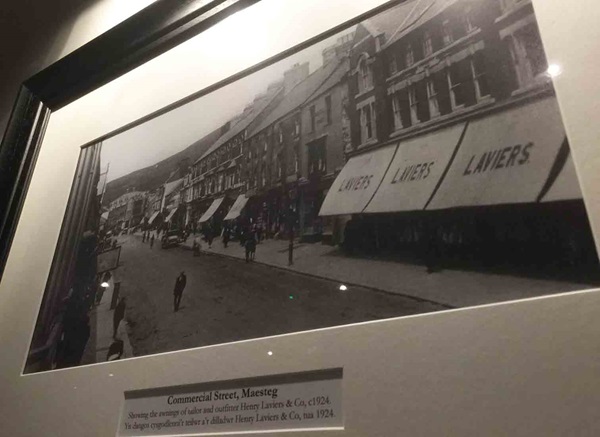
A photograph and text about the Town Hall.
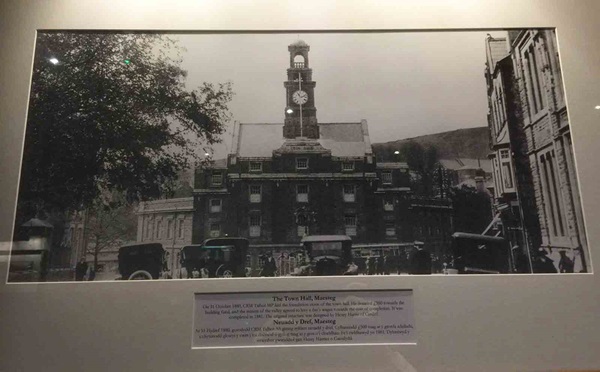
The text reads: On 31 October 1880, CRM Talbot MP laid the foundation stone of the Town Hall. He donated £500 towards the building fund, and the miners of the valley agreed to levy a day’s wages towards the cost of completion.
A photograph and text about Garth Colliery.
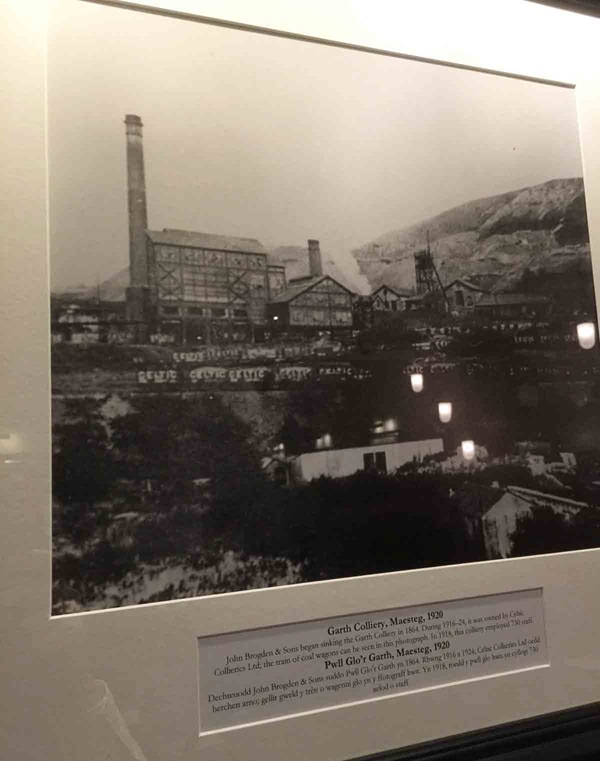
The text reads: John Brogden & Sons began sinking the Garth Colliery in 1864. During 1916-24, it was owned by Celtic Collieries Ltd; the train of coal wagons can be seen in this photograph. In 1918, this colliery employed 730 staff.
A photograph of a travelling sawyer.
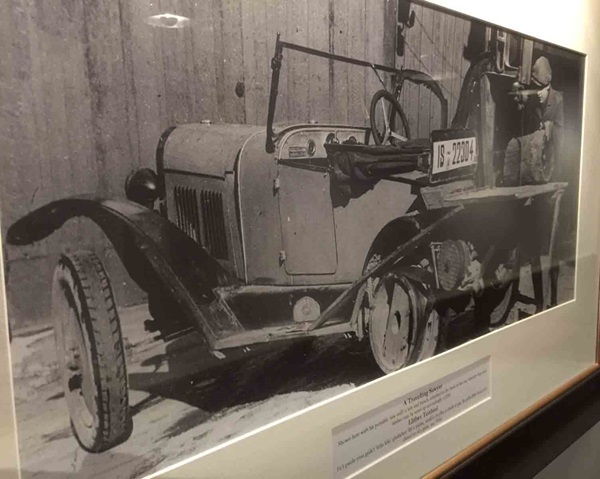
Shown here with his portable ‘saw mill’: a saw and bench, attached to the back of his car, whereby logs and timber may be sawn up accordingly, c1930.
External photograph of the building – main entrance.
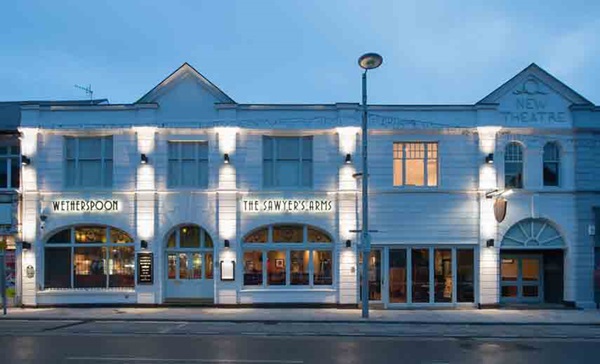
If you have information on the history of this pub, then we’d like you to share it with us. Please e-mail all information to: pubhistories@jdwetherspoon.co.uk